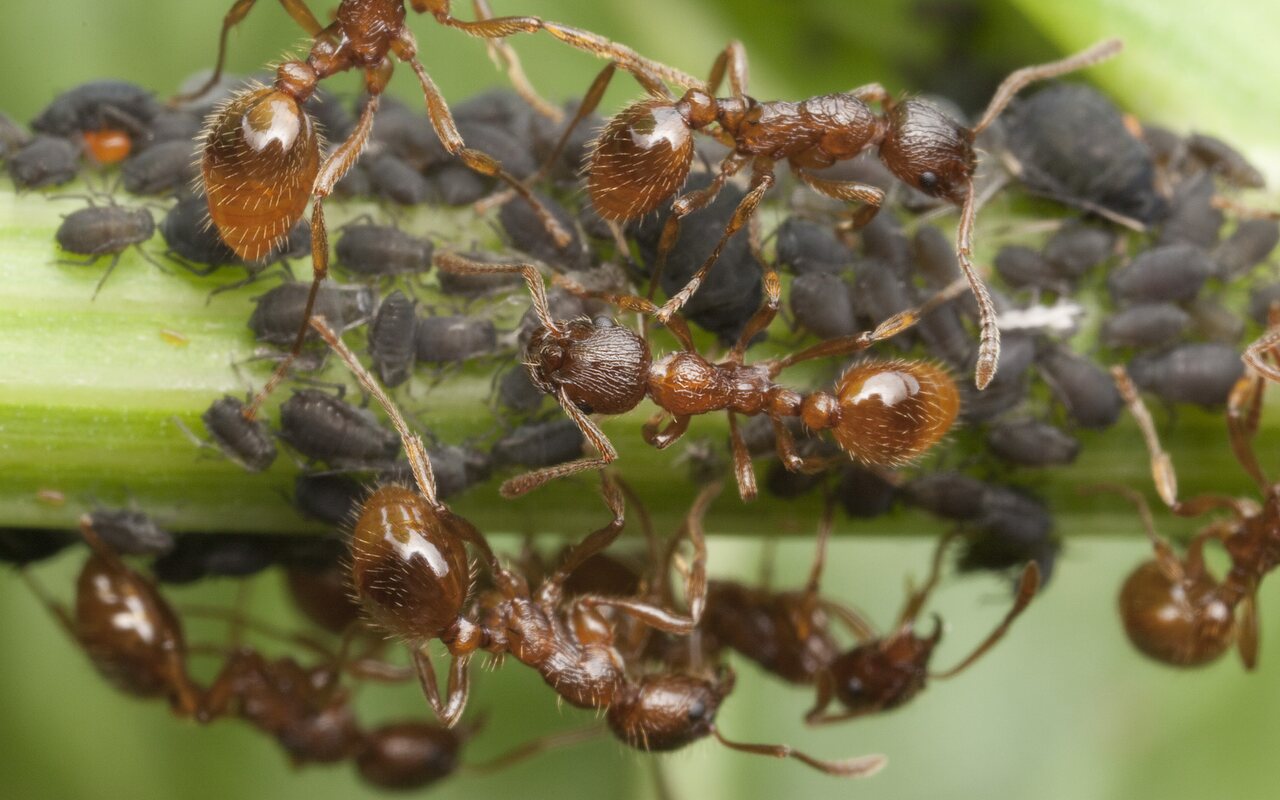
Myrmica rubra · skruzdėlė
- European fire ant, common red ant
- Rote Gartenameise, Rotgelbe Knotenameise
- Siloviholainen
- rudā dzēlējskudra
- wścieklica zwyczajna
- mindre trädgårdsrödmyra
Myrmica rubra is found all over Europe and is now invasive in some parts of North America and Asia. It is mainly red in colour, with slightly darker pigmentation on the head. These ants live under stones and fallen trees, and in soil. They are aggressive, often attacking rather than running away, and are equipped with a stinger, though they lack the ability to spray formic acid like the genus Formica.
This ant's colonies have a polygyne form and can include up to one hundred queens per nest. These queens will have gathered together after their nuptial flight, formed a nest and laid their eggs in it. The species is also polydomous, with many nest sites per individual colony. The queens can live up to fifteen years. Nuptial flights take place normally in late July to mid-August in Europe. Hundreds of young queens and males take to the air to mate together. Afterwards, the males die and the queens shed their wings to make a new colony.
In addition to the regular queens (macrogynes), M. rubra also have a microgyne caste. These queens are smaller in size compared to the macrogyne and were previously believed to be a different species of social parasite (M. microrubra). More recent DNA analysis suggest that they share a gene pool with the macrogyne and are therefor not a different species. While the roles of these microgynes are not yet fully understood, they are often found in nests with regular queens and this is believed to be a form of intraspecific parasitism where the microgyne are a social parasite of the larger macrogyne. The microgynes are also known to act as an alternative reproductive morph and found their own colonies.Similar to Myrmica ruginodis. Important features that distinguish Myrmica ruginodis from Myrmica rubra are the gentle curve at the base of the antenna (and the length of pair of spines projecting from the rear of the main part of the thorax. In Myrmica rugodinis these spines are relatively long - as long as the distance between their tips. Myrmica rubra has short spines protruding from the petiole and a distinctly angled scape (antennal base).
‥
0 comments
Add a comment